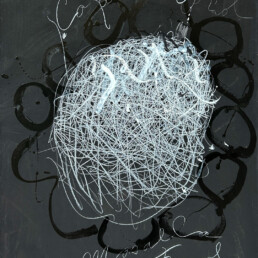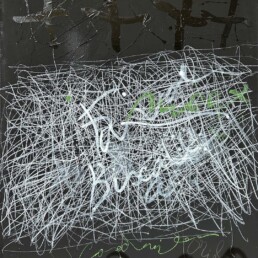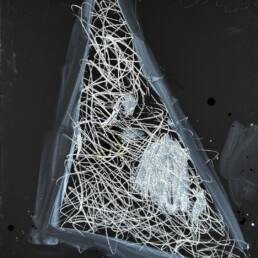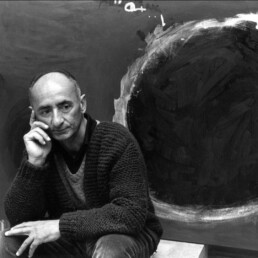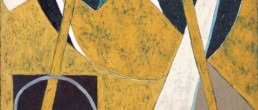Jean Capdeville
1917 (Saint Jean de l'Albère) - 2011 (Céret)
Biography
Jean Capdeville (1917-2011) was a French artist whose work, though discreet, bears witness to a rare depth and intensity. Born in Saint-Jean de l’Albère, Pyrénées-Orientales, he was marked from childhood by the loss of his father, who died at the front a year after his birth during the First World War. This family bereavement had a profound influence on Capdeville, especially through the figure of his mother, who wore black as a tribute to the deceased. This color of mourning, synonymous with melancholy and respect, would become a central element in his work, reflecting his quest for introspection and his attraction to the depths of the human soul.
It wasn’t until 1947, at the age of 30, that Capdeville turned to painting, a late but powerful vocation that drove him to express a personal vision of reality. His artistic approach is profoundly introspective, favoring silence and seclusion. He prefers to work away from the big cities and the dominant currents of his time, concentrating on an aesthetic research that sets him apart from his contemporaries.
Initially figurative, Capdeville ‘s style quickly evolves towards a unique abstraction, inspired by natural landscapes and the textures of the surrounding world. Fascinated by matter and texture, he incorporates unconventional materials such as crumpled paper and varnish, creating an “aesthetic of disappearance”. The omnipresence of black in his work, inspired by the bereavement of his mother, gives his compositions an introspective and mysterious character, a space of silence where matter seems to absorb light and time. Far from being a static color, Capdeville ‘s black is alive and vibrant, a hue that breathes and tells silent stories.
During his career, Capdeville worked at the Fondation Maeght, a renowned art center where he was involved in the lithography and engraving workshop. There, he rubbed shoulders with internationally renowned artists such as Pablo Picasso and Joan Miró. These encounters enriched his vision and techniques, while encouraging him to deepen his own artistic language. Although surrounded by creative geniuses, Capdeville remained in the shadows, preferring a humble, introspective approach and keeping out of the spotlight.
His discretion became one of the hallmarks of his career. Unlike many of his contemporaries, he does not seek fame or recognition, remaining faithful to a deeply personal artistic vision. His public exhibitions are rare, but each of his works reveals a meditative intensity that captures the attention of observers sensitive to this intimate, poetic dimension. His canvases, dominated by intense blacks and complex textures, often evoke interior landscapes, mountains, valleys and tormented skies, without referring to precise locations.
Withdrawn from the media world, Capdeville prefers the solitude of his studio to the hustle and bustle of major artistic events. This deliberate choice to remain on the sidelines is also a way of preserving the authenticity of his approach. The landscapes he creates are representations of inner worlds, spaces where silence and reflection reign, far removed from the superficiality of passing artistic fashions.
In his final years, Capdeville settled in Céret, the town that welcomed him and in which he continued to create until the end of his life in 2011. The last works of this period attain a new maturity and serenity, revealing an even more stripped-down, almost spiritual aesthetic, where black and matter merge in compositions that are both mysterious and soothing.
Today, although relatively unknown to the general public, Jean Capdeville is recognized as an essential artist of French lyrical abstraction. His works, imbued with silence and mystery, invite the viewer into a unique introspective experience, reminding us that, sometimes, it is in discretion and depth that art finds its greatest strength. Preserved in museums and private collections, Capdeville ‘s creations continue to fascinate and touch those who seek a meditative, authentic art form on the bangs of ephemeral trends.


